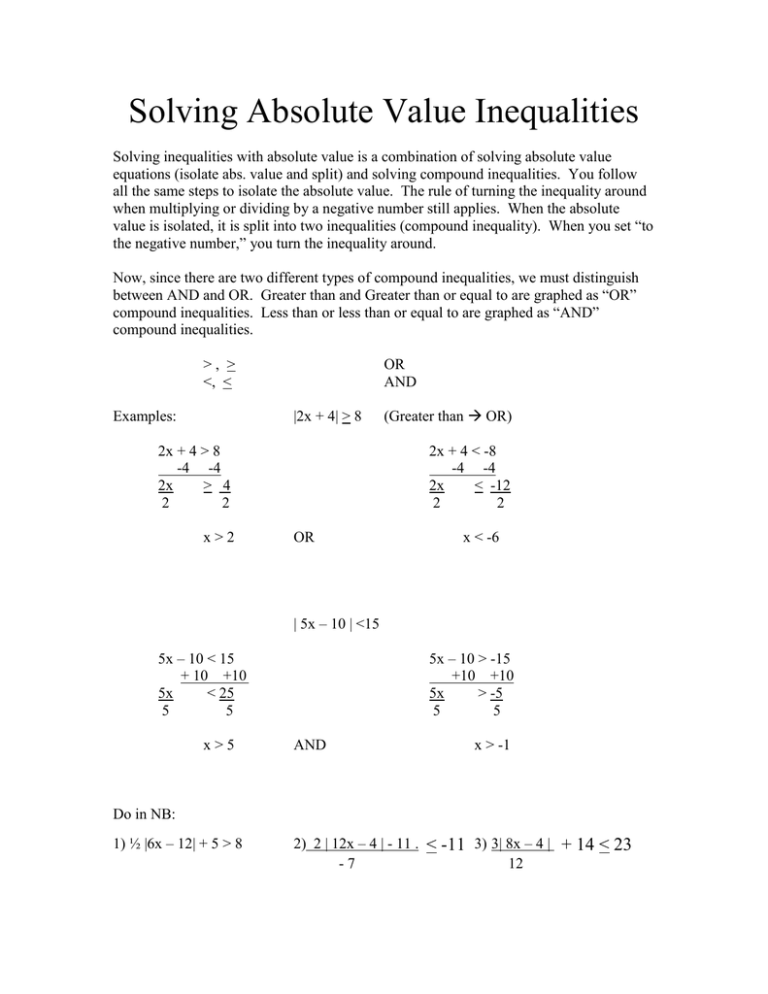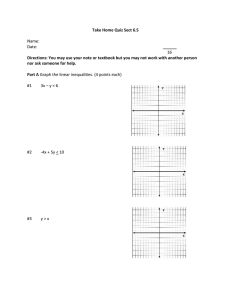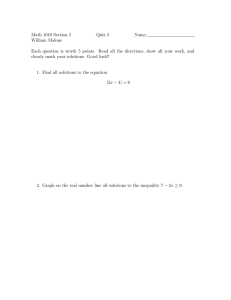Solving Absolute Value Inequalities
advertisement

Solving Absolute Value Inequalities Solving inequalities with absolute value is a combination of solving absolute value equations (isolate abs. value and split) and solving compound inequalities. You follow all the same steps to isolate the absolute value. The rule of turning the inequality around when multiplying or dividing by a negative number still applies. When the absolute value is isolated, it is split into two inequalities (compound inequality). When you set “to the negative number,” you turn the inequality around. Now, since there are two different types of compound inequalities, we must distinguish between AND and OR. Greater than and Greater than or equal to are graphed as “OR” compound inequalities. Less than or less than or equal to are graphed as “AND” compound inequalities. >, > <, < Examples: OR AND |2x + 4| > 8 (Greater than OR) 2x + 4 > 8 -4 -4 2x > 4 2 2 x>2 2x + 4 < -8 -4 -4 2x < -12 2 2 OR x < -6 | 5x – 10 | <15 5x – 10 < 15 + 10 +10 5x < 25 5 5 x>5 5x – 10 > -15 +10 +10 5x > -5 5 5 AND x > -1 Do in NB: 1) ½ |6x – 12| + 5 > 8 2) 2 | 12x – 4 | - 11 . -7 < -11 3) 3| 8x – 4 | + 14 < 23 12 Worksheet: Do on this sheet: 1) |4x – 12| < 20 2) 5| ½ x + 6| - 8 > 12 3) – ⅔|2x – 4| + 8 > 2 4) -6|6x + 12| + 3 < -177 5) 3 | 10x – 5 | + 5 . 4 < 20 6) 7| 3x – 9 | 6 + 14 < 0 Think about these two: Finish on the back if necessary: 7) 3|2x – 8| + 19 > 7 8) -4|7x – 14| - 3 > 59



